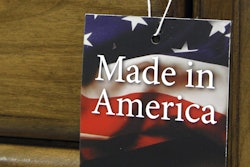NEW YORK (AP) — Coca-Cola saw the popularity of its namesake sodas decline in key markets around the world during the first quarter, reflecting a mix of changing tastes, challenging economic conditions and a shifting business strategy.
The world's biggest beverage maker said Wednesday that sales volume for sodas like Diet Coke and Cherry Coke that bear its name collectively declined in North America, Europe and the unit including the Middle East and Africa.
Total sales volume rose 2 percent, helped by performance of other sodas like Fanta and strength in non-carbonated drinks like bottled water and sports drinks.
The slip in Coke's namesake drinks comes as big soda brands are being pressured in the U.S. and elsewhere by a proliferation of competition. Soda is also an ongoing target for public health advocates, who blame the drinks for fueling obesity. Diet Coke has been fading in popularity domestically as well.
As people keep moving away from big sodas, Coke has retooled its strategy to focus on packaging like glass bottles and mini-cans that can fetch more money. Even if people drink less soda, the idea is that they'll spend more when they do.
James Quincey, Coca-Cola's president, also noted Wednesday that the economies of emerging markets have been hit harder than developed markets. Since Coke tends to sell more sodas than non-carbonated drinks in those markets, he said that affects its global soda sales.
To keep up with changing tastes, Coke and Pepsi are putting more marketing behind options like premium water, bottled teas and even milk. But Coke is still trying to burnish its flagship drink.
This week, the company unveiled new cans and bottles of Diet Coke and Coke Zero that make them look more like regular Coke, with giant red circles on the cans. By uniting the varieties under a single brand, Coca-Cola says they'll have more impact on stores shelves and maximize advertising dollars.
The new cans are rolling out in Mexico next month, and will spread to other countries this year and next. Coca-Cola said it's still testing its options in the U.S. and that no changes are planned for 2016.
When asked whether the new cans and bottles could lead to confusion, Quincey said the concept was well received in test markets.
But in a survey of 65 investors, Bernstein analyst Ali Dibadj said opinions were mixed. He also used WordClouds.com to capture their reactions, and the words "confused" and "Japan" were prominently featured.
At least one person apparently thought the big red circle on the cans of Diet Coke looked like the Japanese flag.
For the quarter ended April 1, Coca-Cola's profit fell 5 percent to $1.48 billion as it was hit by a strong dollar and refranchising charges.
Excluding one-time items, the Atlanta company earned 45 cents per share. That was a penny more than expected, according to Zacks Investment Research.
Net operating revenue fell 4 percent to $10.28 billion. Organic revenue, which excludes divestitures and currency fluctuations, rose 2 percent.
That seemed to raise worries about the company's ability to hit its target for organic revenue growth of 4 to 5 percent for this year.
Shares of Coca-Cola closed down 4.8 percent at $44.37.


















